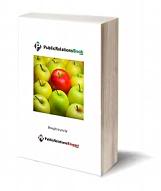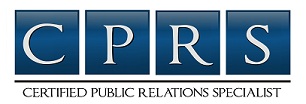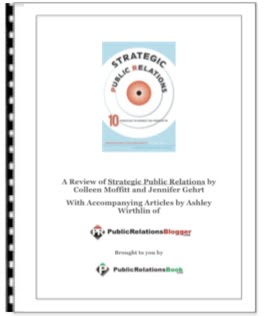________________________________________________________________________
Hundreds of thousands of News Releases are sent out all the time
and many people will show you different ways to write a news release in a way that will result in publicity for you or for your company.
However, many people over look the 17 Deadly Sins that you should never do or have in a news release. These can cause your news release to end up in the shredder!
I will discuss five of them here that I believe you should look at first. Ask yourself, "Am I doing any of these? And if so, rewrite or redo the new release before sending it out.
Remember that the reason that you are sending one is to get noticed and have it picked up by the different media outlets.
You can gain much credibility and attention when you send a successful news release. You can also be seen as a valuable resource for information or an expert in a particular field, so it is important to make sure that your release is completed right and does not have any of the deadly sins.
The first thing that people do is to send too much information. I have seen people fax 20 or more pages with background and promotion material. First this annoys the media. Second, the point of a news release is to get them to call you. They won't know what angle you are after and will guess with that much information.
That is if they publish at all. A news release should be one page, double spaced or at least 1/2 spaces with the most pertinent information on it. Only on rare occasions do you want more. You can and should have a media kit ready when they call, but the news release needs to be short.
Second, white space, white space, white space. Say these words repeatedly. Do not send a solid block of information. It is hard to read and hard to find the facts. People generally feel over whelmed at a solid block and are less likely to read it. Remember, with the volume of releases that are received every day the editors want to scan it fast to decide if it is news worthy. They also decide if it ties in with anything so they can know where to assign the story. If they are unable to scan and find the important details or find anything interesting fast it will be shredded.
Third, several of my friends in the media have said to me that one of their pet peeves with a news release is people who start with a history lesson. They said that they groan and crumple up the new release without going further. 99% of the time the history has nothing to do with the news part of the news release. The history lesson is much more interesting to you than it is to them. Tell them up front what the news is. Give them something to hook them in. There are many categories and classifications that you can use. Later you can mention some of the history or keep it for your media kit.
Fourth, be careful which fax numbers you use. Sending your news release out on an advertising line can get it shredded fast even if it is a good story. If you send your news release out on an advertising line it looks like a blatant request for free advertising. The media just won't want to use it. You could hurt yourself for future releases as well.
Five, Jargon whether it is in your industry or just way over used jargon. You will get a much better response if you give the benefits for the clients or customers of your products or services. Flashy descriptions say nothing of what you really have or how it can help people. Remember, you are probably interested in the features of your product but they are interested in the benefits.
Some examples of jargon are:
*Leading
*State-of-the-art
*Seamless
*Best of
*Turnkey
*Customer Driven
*Solutions
A study of all news releases sent via Business Wire and PR Newswire during a one-week period had one new "solution" being offered once every eight minutes on average! More than half of all companies claimed to be "leading providers"
It does take time to complete a news release right; however, if you are going to take time to create one, it only makes sense to do it in a way that is well received by your intended target market.
Remember these starter points and you will be on you way to creating a much more effective news release.
All the Best in your endeavors!
All the Best!
Maria Boomhower
The Master Communicator
To sign up for a free report on "The 7 Secrets to Communication Mastery" go to her website.
P.S. If you like what you're reading in this ezine, you'll love the book, "Effective News Releases" It's a manual that helps you to get noticed, have the coverage needed and build your credibility! Click here to learn more.
Article Source.
Tags: press release writing tips, public relations 101, public relations
|

Public Relations 101: Press Release Writing Tips
________________________________________
Hundreds of thousands of News Releases are sent out all the timeand many people will show you different ways to write a news release in a way that will result in publicity for you or for your company.
However, many people over look the 17 Deadly Sins that you should never do or have in a news release. These can cause your news release to end up in the shredder!
I will discuss five of them here that I believe you should look at first. Ask yourself, "Am I doing any of these? And if so, rewrite or redo the new release before sending it out.
Remember that the reason that you are sending one is to get noticed and have it picked up by the different media outlets.
You can gain much credibility and attention when you send a successful news release. You can also be seen as a valuable resource for information or an expert in a particular field, so it is important to make sure that your release is completed right and does not have any of the deadly sins.
The first thing that people do is to send too much information. I have seen people fax 20 or more pages with background and promotion material. First this annoys the media. Second, the point of a news release is to get them to call you. They won't know what angle you are after and will guess with that much information.
That is if they publish at all. A news release should be one page, double spaced or at least 1/2 spaces with the most pertinent information on it. Only on rare occasions do you want more. You can and should have a media kit ready when they call, but the news release needs to be short.
Second, white space, white space, white space. Say these words repeatedly. Do not send a solid block of information. It is hard to read and hard to find the facts. People generally feel over whelmed at a solid block and are less likely to read it. Remember, with the volume of releases that are received every day the editors want to scan it fast to decide if it is news worthy. They also decide if it ties in with anything so they can know where to assign the story. If they are unable to scan and find the important details or find anything interesting fast it will be shredded.
Third, several of my friends in the media have said to me that one of their pet peeves with a news release is people who start with a history lesson. They said that they groan and crumple up the new release without going further. 99% of the time the history has nothing to do with the news part of the news release. The history lesson is much more interesting to you than it is to them. Tell them up front what the news is. Give them something to hook them in. There are many categories and classifications that you can use. Later you can mention some of the history or keep it for your media kit.
Fourth, be careful which fax numbers you use. Sending your news release out on an advertising line can get it shredded fast even if it is a good story. If you send your news release out on an advertising line it looks like a blatant request for free advertising. The media just won't want to use it. You could hurt yourself for future releases as well.
Five, Jargon whether it is in your industry or just way over used jargon. You will get a much better response if you give the benefits for the clients or customers of your products or services. Flashy descriptions say nothing of what you really have or how it can help people. Remember, you are probably interested in the features of your product but they are interested in the benefits.
Some examples of jargon are:
*Leading
*State-of-the-art
*Seamless
*Best of
*Turnkey
*Customer Driven
*Solutions
A study of all news releases sent via Business Wire and PR Newswire during a one-week period had one new "solution" being offered once every eight minutes on average! More than half of all companies claimed to be "leading providers"
It does take time to complete a news release right; however, if you are going to take time to create one, it only makes sense to do it in a way that is well received by your intended target market.
Remember these starter points and you will be on you way to creating a much more effective news release.
All the Best in your endeavors!
All the Best!
Maria Boomhower
The Master Communicator
To sign up for a free report on "The 7 Secrets to Communication Mastery" go to her website.
P.S. If you like what you're reading in this ezine, you'll love the book, "Effective News Releases" It's a manual that helps you to get noticed, have the coverage needed and build your credibility! Click here to learn more.
Article Source.
Tags: press release writing tips, public relations 101, public relations
Popular choices
- Non Gamstop Casino
- Mejores Salas De Póker
- Casino Non Aams
- Non Gamstop Casinos
- Siti Casino Online Non Aams
- Migliori Siti Casino Online
- UK Online Casinos Not On Gamstop
- Non Gamstop Casino Sites UK
- Non Gamstop Casino Sites UK
- UK Casino Not On Gamstop
- Casinos Not On Gamstop
- Online Casino
- オンラインカジノ
- UK Casino Not On Gamstop
- UK Casino Not On Gamstop
- Reputable Non Gamstop Casinos
- Casinos Not On Gamstop
- Best Non Gamstop Casinos
- Non Gamstop Casino
- Casinos Not On Gamstop
- Slots Not On Gamstop
- Non Gamstop Casino
- Casino Non Aams
- Casinos Not On Gamstop
- Betting Sites Not On Gamstop
- Casino Online Italia
- Casino En Ligne Belgique
- Sites De Paris Sportif Fiables
|
| What did you think? |
Filed Under:
press release writing tips,
public relations,
Public Relations 101
Subscribe to:
Post Comments (Atom)






Comments (0)
Post a Comment